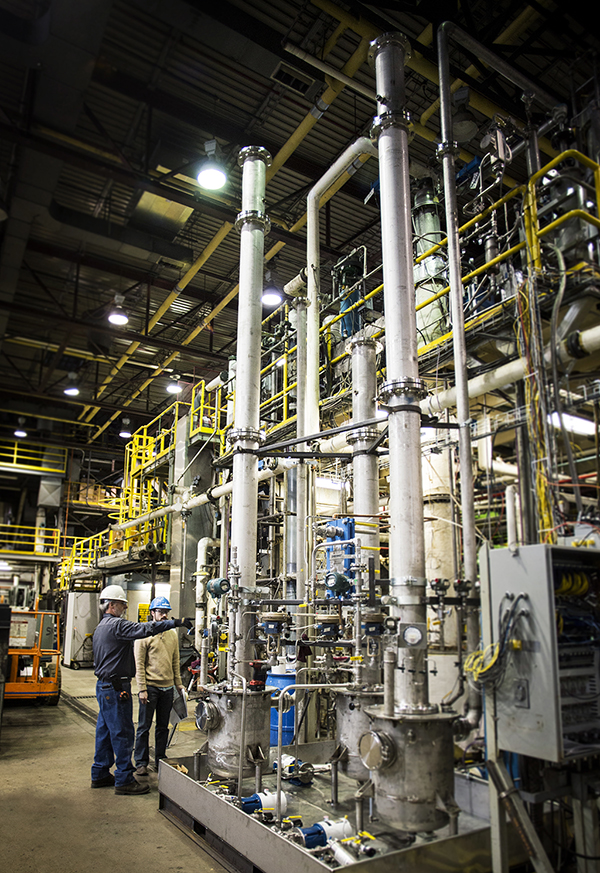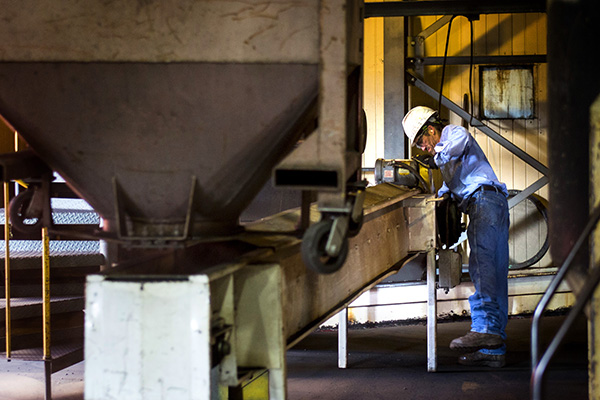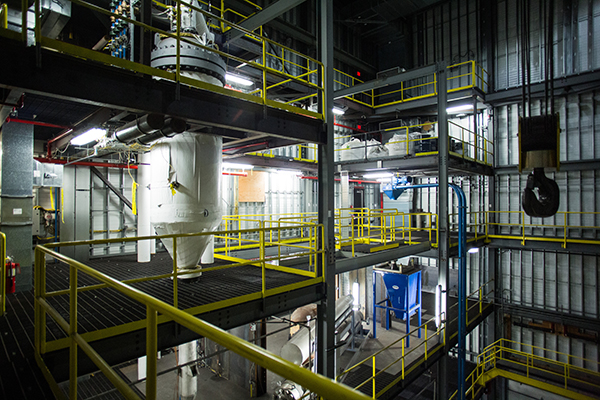Demonstration Facilities
The EERC has over 54,000 ft2 of demonstration facilities that accommodate a variety of technologies. The space allows for custom construction of new pilot-scale components to fit client needs. Technical expertise and field sampling experience are also available for off-site demonstrations. Much of the mechanical design and modeling of equipment and machinery for demonstration facilities is done on-site in our in-house machine shop. This allows the EERC to demonstrate technologies in a more rapid, cost-effective way.

Materials Exploration Facility Coming Soon
Construction is nearing completion on the new Materials Exploration (MatEx) facility—a 28,700-square-foot building designed to support the growing need for carbon dioxide removal (CDR) innovation.
MatEx provides:
- Dedicated space for CDR technology testing
- Integrated areas for feedstock processing and materials analysis
- Infrastructure tailored to support early-stage pilot demonstrations
Demonstration Facility I
A 6000-ft2 structure containing seven pilot-scale units to demonstrate the combustion of solid and liquid fuels such as coal, biomass (rice hulls, switchgrass, sunflower hulls), sewage sludge, and oil slurries. The units focus on operational issues and environmental emission control. These units provide a cost-effective way of testing fuels and system components prior to full-scale testing.
Lorne “Mack” McEwen Demonstration Facility II
A 4000-ft2 high-bay area that contains the slagging furnace system/high-temperature air furnace (HITAF), the continuous emission process simulator, and a dry solids pump test facility. The small-scale systems allow the EERC to study the fundamentals of combustion, while the larger combustion system focuses on scale-up and practical issues. The HITAF has been used extensively in the demonstration of a new power concept and a variety of emission control systems for a number of clients. The dry solids pump test facility was developed and is operated in support of a DOE NETL project with the Gas Technology Institute.
Process Tower
A four-story complex housing two advanced power systems. The transport integrated gasification (TRIG) unit is an advanced power system that meets the needs of DOE’s FutureGen Program, which promotes energy technologies of the future. The TRIG has been shown to produce high levels of hydrogen, and testing has been conducted on new hydrogen separation membranes. The EERC conducts studies in support of the Wilsonville scale-up facility as well as for other industrial clients. The atmospheric circulating fluid-bed reactor has also been used extensively for economical testing of fuels, operational issues, and emission control technologies.

Process Development Facility (high-pressure fuel processing)
A process called hot-water drying removes the moisture inside of solid fuels, seals their pores, and slurries the fuel for ease of use. This process has shown great promise for use with low-rank coals, biomass, and sewage sludge.
Fuel Preparation and Testing Facility
Houses extensive capabilities to crush, pulverize, shred, size-classify, and store a variety of solid fuels. The facility can accept up to a semi load of fuel at a time and can handle fuels such as coal, biomass, and virtually any material that can be handled like coal. In addition to supporting internal EERC activities, this equipment is also used to produce fuels for outside clients conducting pilot-scale tests.

The Fuels of the Future Facility
Provides an additional 10,100 ft2 of demonstration space for corporate partners to install demonstration systems and gives the EERC the opportunity to expand programs and new technologies. The 70-ft-high building was constructed to focus on the development and demonstration of technologies for the production of non-petroleum-derived liquid fuels (renewable jet, diesel, and gasoline) and hydrogen, utilizing valuable domestic energy resources. Fuels of the Future includes a high-bay area with multiple levels, control rooms, and additional space for handling equipment and materials.
